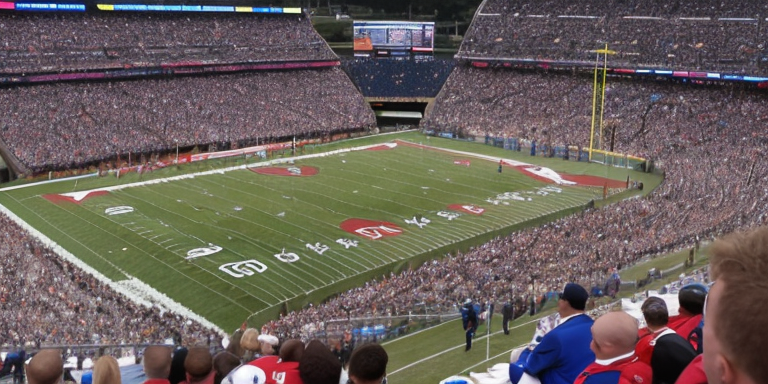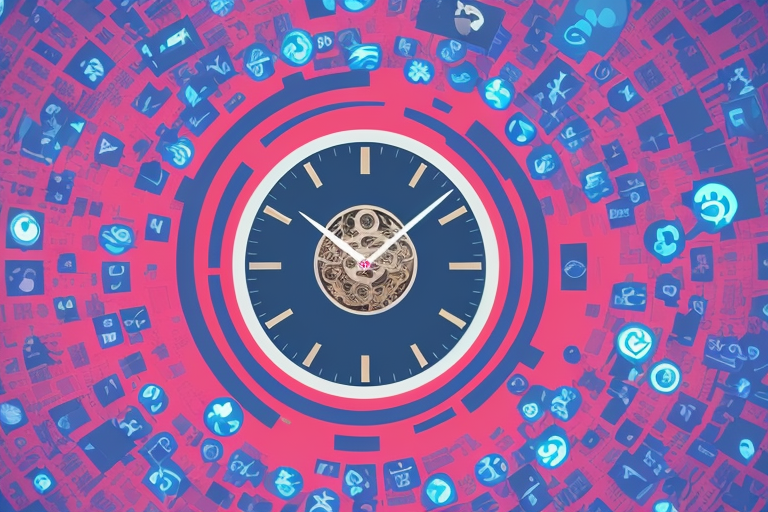The NFL Draft and the Impact of COVID-19
The NFL draft is an annual event where teams select eligible football players to join their team. It is a crucial event for teams to build their rosters and plan for the upcoming season. The draft typically takes place in late April, and teams have seven rounds to select players. The order of the draft is determined by the team’s record in the previous season, with the worst team selecting first.
However, the COVID-19 pandemic has had a significant impact on the sports world, and the NFL draft was not immune to its effects. The pandemic forced the NFL to change the format of the draft in 2020, making it a virtual event for the first time in history. This change brought about new challenges for teams, prospects, and the league as a whole.
The purpose of this article is to explore the impact of the pandemic on the NFL draft, including the virtual draft in 2020 and the changes for the 2021 draft. We will also discuss the impact on prospects and the role of technology in the draft process. Ultimately, this article aims to provide insight into the resilience of the NFL and the prospects who aspire to play at the highest level, even in the face of unprecedented challenges.
The Virtual Draft in 2020
The 2020 NFL draft was a historic event as it was the first-ever virtual draft. Due to the COVID-19 pandemic, the league was forced to change the format of the draft, and teams had to make their selections from remote locations. The draft was broadcasted live on television, and fans were able to watch the event from the comfort of their homes.
The virtual draft brought about new challenges for teams and prospects. Teams had to rely on technology to communicate with each other and make their selections. This reliance on technology led to some technical difficulties, such as delayed picks and communication issues. Prospects also had to adapt to the new format, as they were unable to attend the draft in person and had to wait to hear their names called from their homes.
Despite the challenges, the virtual draft had some positive aspects. The event was more inclusive, as prospects who were unable to attend the in-person event in previous years were now able to participate. The virtual format also made the event more accessible to fans, as they were able to watch the draft from anywhere in the world.
Overall, the virtual draft in 2020 was a unique experience that brought about new challenges and opportunities. It showcased the resilience of the NFL and its ability to adapt to changing circumstances.
Changes for the 2021 Draft
The 2021 NFL draft will be a hybrid event, with some aspects of the event taking place in-person and others taking place virtually. The league has put safety protocols in place to ensure the safety of everyone involved in the event. The draft will take place in Cleveland, Ohio, and will be held in a larger, outdoor venue to allow for social distancing.
However, an in-person event during the pandemic poses its own set of challenges. The league has had to limit the number of attendees, and prospects will not be able to attend the event in person. Instead, they will participate virtually, as they did in 2020. The league has also had to adapt to changing circumstances, as the pandemic situation is constantly evolving.
Despite the challenges, the league is committed to holding the event in a safe and responsible manner. The 2021 draft will be a testament to the resilience of the NFL and its ability to adapt to changing circumstances.
Conclusion
The COVID-19 pandemic has had a significant impact on the NFL draft, forcing the league to change the format of the event. The virtual draft in 2020 brought about new challenges and opportunities, while the 2021 draft will be a hybrid event that poses its own set of challenges. However, the NFL has shown resilience in the face of adversity, and the draft remains a crucial event for teams to build their rosters and plan for the upcoming season. The future of the draft remains uncertain, but one thing is for sure: the NFL will continue to adapt and evolve in a changing world.
The Ups and Downs of the Virtual Draft
The 2020 NFL draft was unlike any other in history. Due to the COVID-19 pandemic, the event was held virtually, with teams and prospects participating from their own homes. While the virtual draft was a success in many ways, it also presented a number of challenges for teams and prospects alike.
One of the biggest challenges of the virtual draft was the lack of in-person interaction between teams and prospects. Without the ability to meet face-to-face, teams had to rely on technology to evaluate and select their picks. This made it difficult for teams to get a sense of a prospect’s personality and work ethic, which are important factors in determining whether a player is a good fit for a team.
Another challenge of the virtual draft was the potential for technical difficulties. With so many people participating remotely, there was a risk of internet connectivity issues or other technical problems that could disrupt the event. While the NFL took steps to mitigate these risks, such as providing backup communication channels and technical support, there were still a few hiccups during the event.
Despite these challenges, there were also some positive aspects of the virtual draft. One of the biggest benefits was the increased accessibility of the event. With no need for travel or in-person attendance, more people than ever before were able to participate in and watch the draft. This made the event more inclusive and allowed more fans to connect with their favorite teams and players.
One prospect who was particularly impacted by the virtual draft was Uvanni, a talented wide receiver from a small college. Without the opportunity to participate in pro days or other in-person events, Uvanni had to rely on game film and virtual interviews to showcase his skills to teams. While he was ultimately not selected in the draft, he remains hopeful that he will get a chance to prove himself in the NFL.
Overall, the virtual draft was a unique and challenging event that required teams and prospects to adapt to new ways of doing things. While there were certainly some downsides to the event, there were also some positive aspects that could be carried forward into future drafts. As the NFL continues to evolve and adapt to a changing world, it will be interesting to see how the draft process continues to evolve as well.
The 2021 NFL Draft: Changes and Challenges
As the world continues to grapple with the ongoing COVID-19 pandemic, the NFL has been forced to adapt its approach to the annual draft. While the 2020 virtual draft was a success, the league has decided to hold an in-person event for the 2021 draft. However, this decision has come with its own set of challenges.
To ensure the safety of all involved, the NFL has implemented strict safety protocols for the event. These protocols include mandatory mask-wearing, social distancing, and regular testing. In addition, the event will be held in a larger, outdoor venue to allow for more space and better ventilation.
While these measures are necessary to protect the health of everyone involved, they also pose challenges for the teams and prospects. For example, the larger venue may make it more difficult for teams to communicate and make decisions quickly. In addition, the outdoor setting could pose challenges for lighting and sound, making it harder for prospects to hear their names called.
Despite these challenges, the NFL is confident that the in-person event will be a success. The league has worked closely with local officials and medical experts to ensure that all safety protocols are followed and that the event is as safe as possible.
One potential prospect for the 2021 draft is Uvanni, a talented quarterback from a small college in the Midwest. Uvanni has been working hard to prepare for the draft, despite the challenges posed by the pandemic. He has had to adapt to changes in the pre-draft process, such as canceled pro days and limited college seasons.
The role of the judge will be crucial in ensuring that all safety protocols are followed during the in-person event. The judge will be responsible for enforcing the rules and making sure that everyone involved is following the protocols. This will be a challenging task, but it is essential to ensure the safety of everyone involved.
Overall, the 2021 NFL draft promises to be a unique and challenging event. The league has taken all necessary precautions to ensure the safety of everyone involved, but there are still challenges to overcome. With the help of technology and the dedication of teams and prospects, the NFL is confident that the event will be a success.
The Pandemic’s Impact on Prospects
The COVID-19 pandemic has had a profound impact on the world of sports, and the NFL draft is no exception. While much of the focus has been on the logistical challenges faced by teams and the league, it is important not to overlook the impact on the prospects themselves. For young athletes hoping to make the jump to the professional level, the pandemic has presented a host of unique challenges and obstacles.
One of the most significant challenges has been the disruption of the pre-draft process. With pro days canceled and college seasons shortened or postponed, prospects have had to find new ways to showcase their skills and catch the attention of scouts and coaches. Many have turned to virtual training and online showcases, but these are no substitute for the in-person evaluations that are the lifeblood of the draft process.
In addition to the logistical challenges, the pandemic has also taken a toll on the mental health of many prospects. The uncertainty and upheaval of the past year have been difficult for everyone, but for young athletes with their futures on the line, the stress and anxiety can be especially acute. The isolation of quarantine and the lack of in-person support from coaches, trainers, and teammates can exacerbate these feelings.
Despite these challenges, however, many prospects have shown remarkable resilience and adaptability. They have embraced new technologies and training methods, and they have found ways to stay motivated and focused in the face of uncertainty. Some have even used the pandemic as an opportunity to work on their mental and emotional health, recognizing that a strong mindset is just as important as physical ability.
Of course, the pandemic is not over yet, and its impact on the draft process and the prospects themselves is far from over. However, as we look ahead to the 2021 draft and beyond, it is clear that the resilience and adaptability of these young athletes will continue to be a key factor in their success. As one Uvanni (name) put it, “You can’t control what happens in the world, but you can control how you respond to it.” And that is a lesson that applies not just to the draft process, but to life in general.
The Future of the NFL Draft: The Role of Technology
The 2020 NFL draft was unlike any other in history. Due to the COVID-19 pandemic, the draft was held virtually, with teams and prospects participating remotely. The use of technology was crucial in making the event possible, and it proved to be a success. But what does the future hold for the NFL draft, and how will technology play a role?
During the virtual draft in 2020, technology was used in various ways. Teams communicated with each other and with prospects through video conferencing software. The NFL used a custom-built platform to manage the draft, allowing teams to make their selections and communicate with the league office. The platform also provided real-time updates on the draft board and allowed teams to submit trades.
One of the most significant benefits of the virtual draft was its inclusivity. Prospects who were unable to travel to the draft in previous years due to financial or logistical reasons were able to participate remotely. This allowed more players to be involved in the event and gave them an opportunity to celebrate with their families and friends.
The success of the virtual draft has led many to wonder if technology will play a larger role in future events. One possibility is that the draft could be held entirely online, with teams and prospects participating remotely. This would eliminate the need for a physical location and could make the event more accessible to fans around the world.
Another potential use of technology is in the evaluation and selection process for teams. With the rise of analytics and data-driven decision-making, teams are increasingly relying on technology to help them identify and evaluate prospects. This trend is likely to continue in the future, with teams using advanced analytics and machine learning algorithms to make more informed decisions.
However, there are also potential drawbacks to relying too heavily on technology. One concern is that it could lead to a dehumanization of the draft process, with prospects reduced to data points and statistics. Another concern is that it could lead to a lack of transparency and accountability, with teams relying on algorithms and software to make decisions instead of human judgment.
Despite these concerns, the role of technology in the NFL draft is likely to continue to grow in the coming years. As the world becomes increasingly connected and technology continues to advance, the draft will need to evolve to keep up with the changing times. Whether it is held virtually or in person, the draft will always be a crucial event for the NFL and its fans, and technology will undoubtedly play a role in shaping its future.









